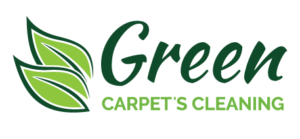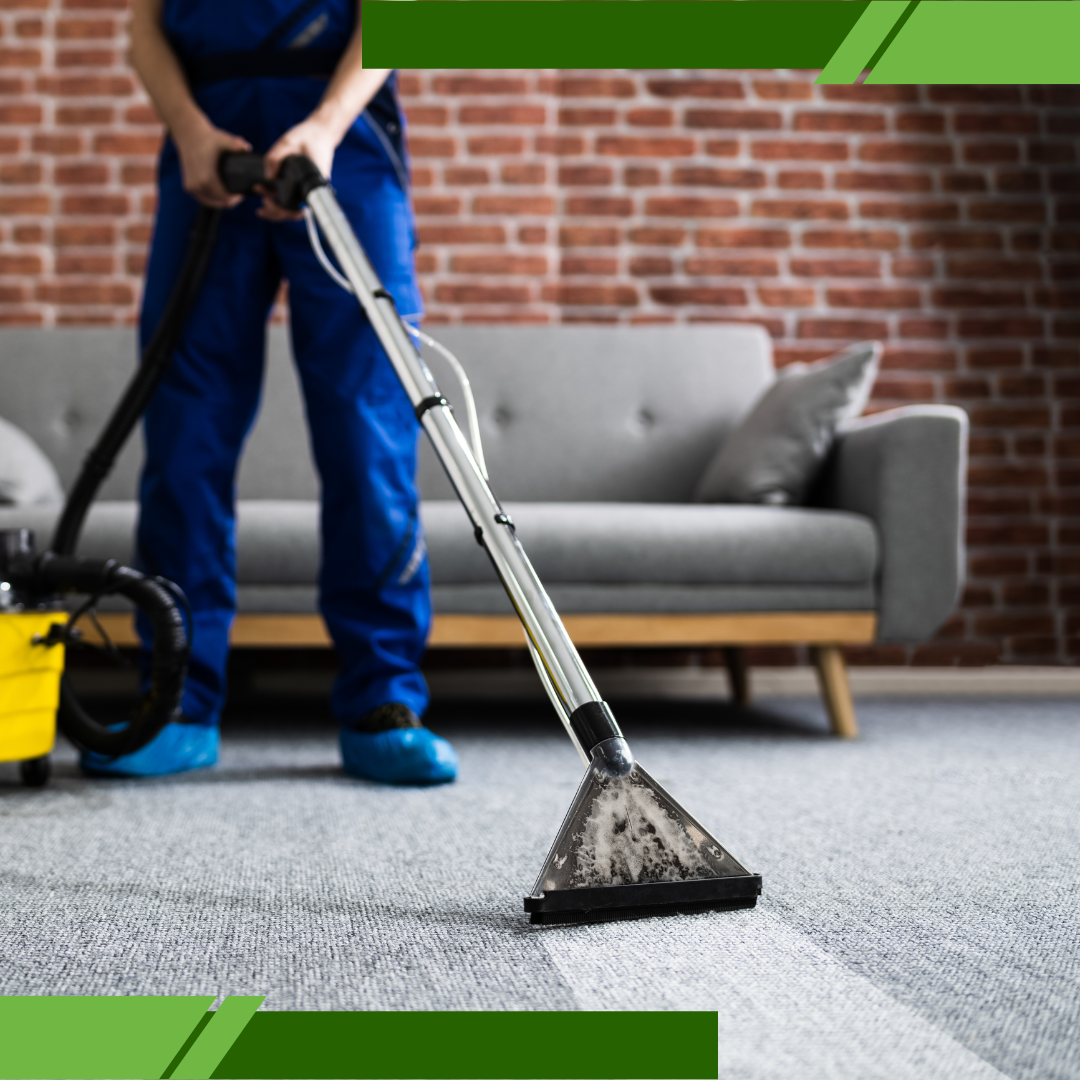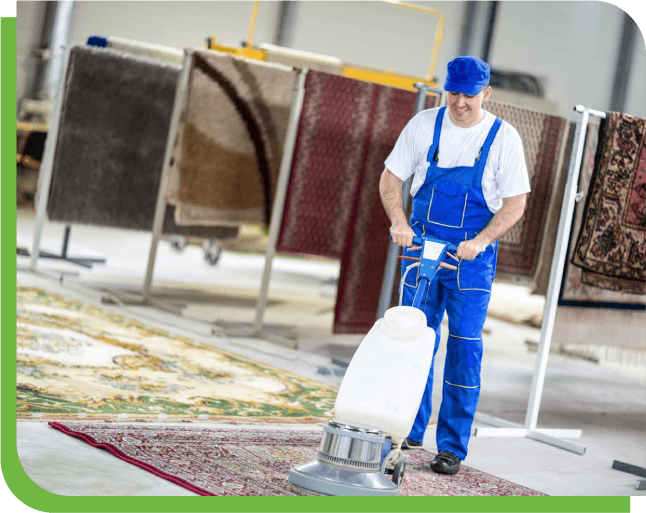Get in touch
Fill this up to proceed

We are committed to providing a world-class carpet, rug, upholstery, drapery or mattress cleaning services that will open your door to a happier and healthier green indoor environment.
Your home may sparkle on the surface, but dust has a way of hiding in places you don’t often check. Even the cleanest homes can unknowingly become hotspots for dust mites, one of the most common indoor allergy triggers. These microscopic pests feed on dead skin cells and thrive in soft areas like carpets, mattresses, and upholstery. You won’t see them, but your body often reacts to their presence with sneezing, itchy skin, or watery eyes. Many homeowners assume regular vacuuming is enough, but while that helps with surface debris, it doesn’t reach the deep layers of carpet where dust mites settle. When left untreated, especially in humid environments or closed-up homes, these indoor allergy triggers quietly multiply and affect your well-being.
To tackle the problem effectively, deeper cleaning is usually needed. That’s why families often rely on trusted services like Mount Wilson, known for thorough restorations that go beyond the surface. These cleanings don’t just improve the look of your carpets; they target the hidden irritants that ordinary vacuums miss. For continued protection, it’s essential to adopt smart habits: wash bedding in hot water weekly, use protective mattress and pillow covers, keep indoor humidity below 50%, vacuum with HEPA-filter machines, and schedule professional cleanings before seasonal shifts. Together, these steps form a strong defense against one of the most stubborn indoor allergy triggers.

If your allergies tend to flare up after a rainstorm or when you spend more time in places like the basement or bathroom, hidden mold could be the reason. Mold spores are among the most powerful indoor allergy triggers, and unlike dust, they don’t have to stay airborne for long to cause a reaction. In Mount Wilson homes, once mold finds a dark, damp space to grow, it spreads quietly and rapidly, often impacting your health before any visible signs appear.
Mold commonly hides in places you rarely check, behind walls, under bathroom tiles, inside cabinets, or beneath old carpet padding. Even a faint musty smell can signal that spores are already circulating through your indoor air. This is especially concerning for residents in moisture-prone areas, where calling professionals like those at Carpet Cleaning Mount Wilson becomes more than a convenience; it becomes a necessity. What hides deep within your floors or walls could eventually end up affecting your lungs and overall well-being.
To stay ahead of this issue, take proactive steps to prevent mold growth. Fix leaky faucets or pipes immediately, ensure proper ventilation in bathrooms and kitchens, and use a dehumidifier in persistently damp areas. Don’t ignore warning signs like mildew smells, and schedule deep carpet cleanings at least once a year. By staying vigilant, you reduce the chances of mold becoming one of the most harmful indoor allergy triggers in your home.

Your pet is a member of your family, but for allergy sufferers, it can also be a major source of discomfort. In Mount Wilson homes, pet-related indoor allergy triggers come not just from fur, but from skin flakes (called dander), saliva, and even what pets track in from outside. These tiny particles cling to carpets, curtains, and clothing, making them tough to clean and easy to spread. Contrary to popular belief, no breed is truly hypoallergenic. Even short-haired pets shed dander, which floats through the air and settles on surfaces your family touches every day. If you’re feeling congested or sneezy in the same room your dog naps in, chances are you’re reacting to lingering allergens.
Pet allergens have a sneaky way of making themselves at home, even when your pets aren’t in the room. Dander settles into carpets and furniture, saliva lingers on toys and bedding, and hair clings to clothes and blankets. Even a simple walk outside can bring pollen and grass indoors on your pet’s paws. Skin flakes can drift up and attach to curtains or settle into corners you rarely clean. And it doesn’t just stay near the pet beds. These indoor allergy triggers circulate through HVAC systems, cling to surfaces, and quietly build up in places regular cleaning can’t fully reach.
That’s why homes with pets benefit greatly from regular deep-cleaning appointments. If you’re not sure where to begin, reaching out to professionals can provide targeted support for allergy relief. Alongside expert help, there are steps you can take to stay ahead of pet allergens: create no-pet zones in bedrooms or playrooms, bathe and brush pets regularly (preferably outdoors), and clean soft surfaces like rugs and sofas frequently. Use HEPA filters in your air systems to stop allergens from recirculating, and don’t skip routine carpet cleanings. By pairing smart home habits with deeper cleanings, you can reduce pet-related indoor allergy triggers and enjoy your home with fewer sniffles and more comfort.
Sometimes, the air you breathe indoors feels heavy, stale, or makes your eyes water. But it’s not always visible dust or mold; it could be your HVAC system spreading indoor allergy triggers every time you adjust the thermostat. From air vents to ceiling fans, unclean systems recirculate old allergens that have settled inside, affecting every room in your home.
Many people change air filters once a year or less, which allows buildup to happen slowly. Every time your system runs, it spreads allergens like pet dander, mold spores, dust, and even pollen across every space. And if your carpet hasn’t been cleaned recently, those particles can settle into the fibers and multiply over time.
Homes in places like Mount Wilson may see this worsen during seasonal changes, which is why expert services are so important. A simple cleaning routine, especially one tailored to your home’s climate and design, can help stop allergen spread before it begins. When air moves, allergens move. And if your home has older carpets or rarely cleaned upholstery, you could be breathing in weeks or even years of hidden triggers. Don’t wait for symptoms to appear. Cleaning your air and floors at the same time will drastically reduce the indoor allergy triggers that quietly affect your comfort and health.
If you often sneeze, cough, or feel stuffy indoors, especially in certain rooms or during specific seasons, you might have indoor allergy triggers. Signs include musty odors, visible dust, or mold
No. Vacuuming only removes surface dirt. Allergens like dust mites and pet dander stay deep in carpet fibers and require professional cleaning to fully remove.
Allergens tend to hide in carpets, furniture, bedding, air ducts, and damp areas like bathrooms or basements.
Yes. Bathe pets outside, clean bedding weekly, use HEPA filters, and get carpets cleaned regularly. Keeping pets out of bedrooms also helps.
Once or twice a year is recommended, though homes in allergy-prone areas like Mount Wilson may need more frequent cleanings.

We are committed to providing a world-class carpet, rug, upholstery, drapery or mattress cleaning services that will open your door to a happier and healthier green indoor environment.
We are committed to providing a world-class carpet, rug, upholstery, drapery or mattress cleaning services that will open your door to a happier and healthier green indoor environment.